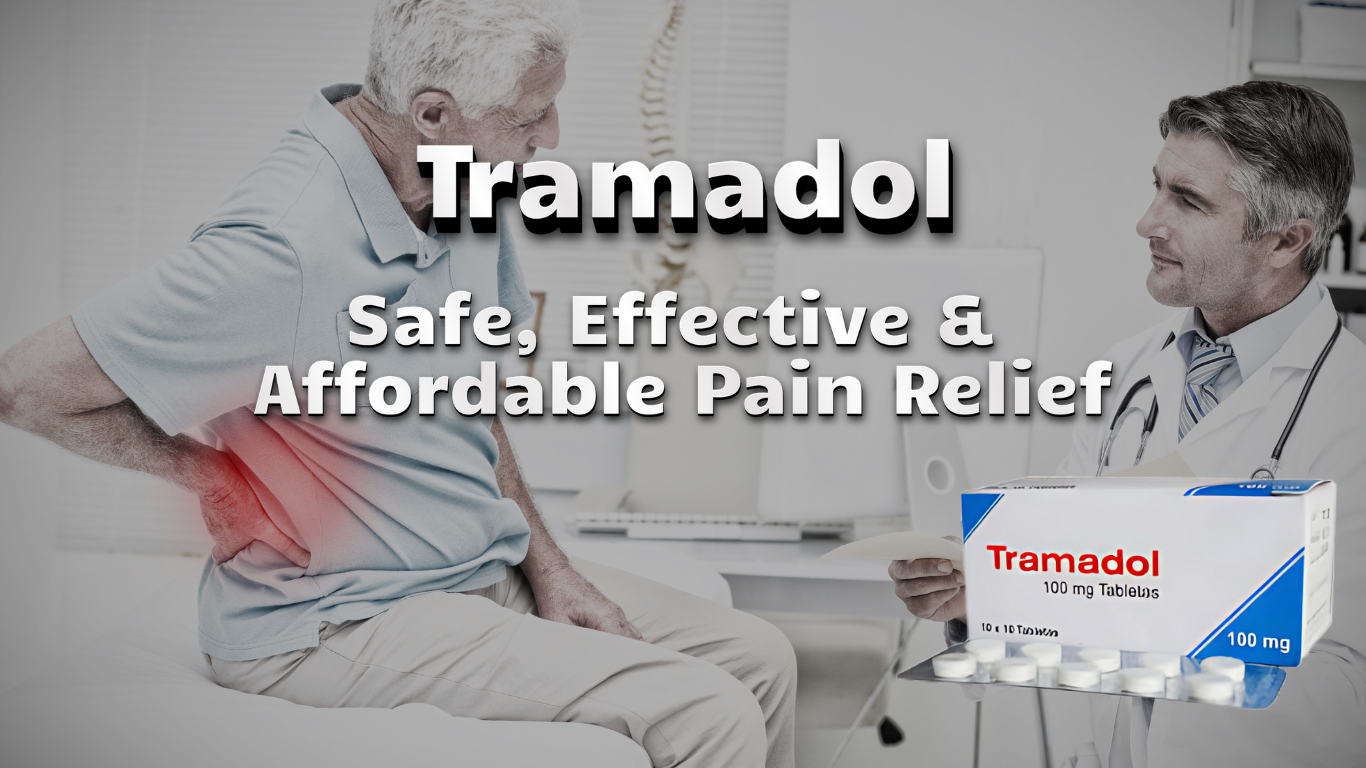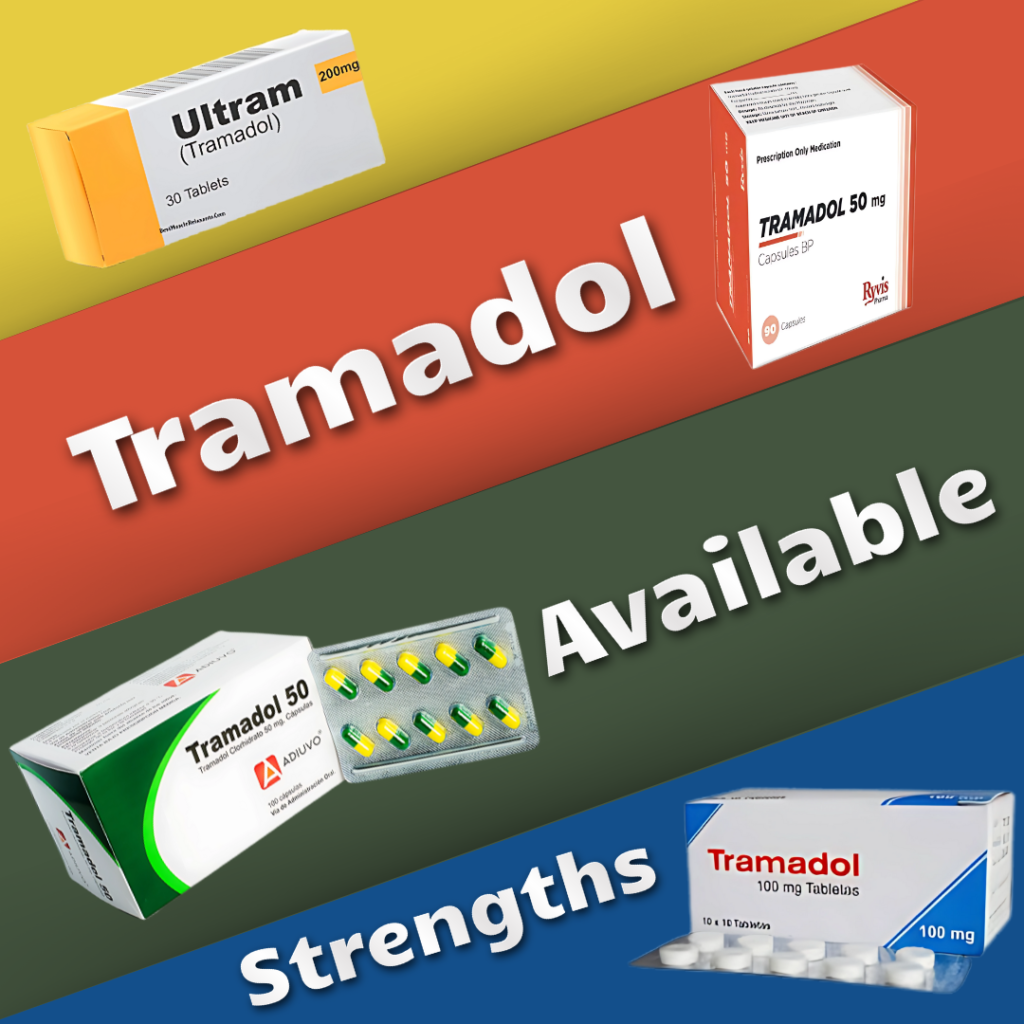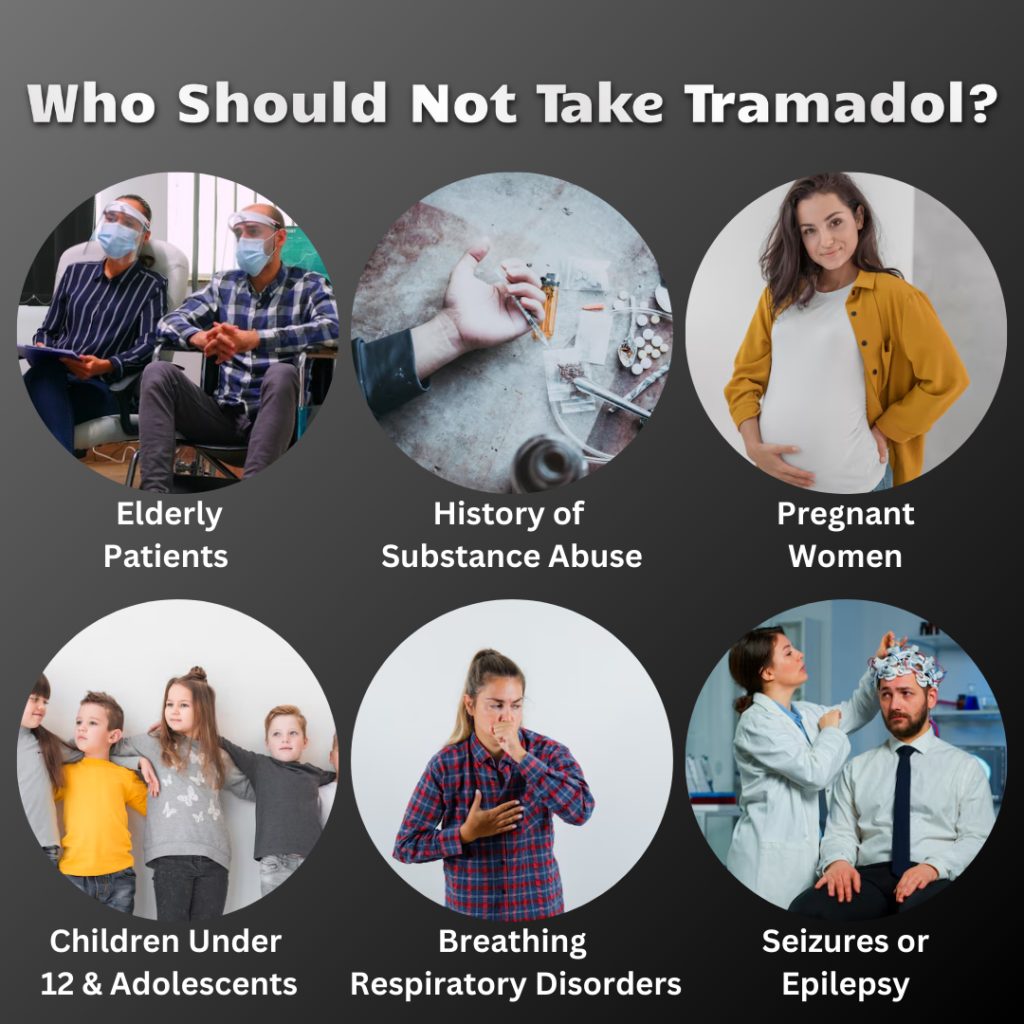
Generic Tramadol, a prescription-based opioid pain reliever, helps doctors in treating moderate to severe chronic pain and that short-term post-surgical pain in patients. As an opioid analgesic, Tramadol affects the central nervous system (CNS) in the body, controlling how the brain picks up pain signals. Plenty of people go for Tramadol online because it’s convenient, affordable, and let’s face it, pharmacies in the USA aren’t always easy to get to. Thing is, grabbing Tramadol online carries some heavy risks. Like ending up with fake pills or dealing with life threatening side effects that nobody wants to have.
Why Trust Care Dental Clinic?
We at Trust Care Dental Clinic, led by Dr. Hargis Sam E DDS, ensure reliable, evidence-based medical information. Our expertise guarantees safe and accurate guidance.
What is opioid?
Opioids are a class of pain relieving drugs that act on our central nervous system and are derived from the opium poppy or synthesized in labs. People use common opioid medications like Tramadol, Morphine, and Oxycodone to treat moderate to severe pain.
What is Tramadol?
Tramadol is classified as a Schedule II controlled substance in the USA by FDA, which means it is tightly regulated due to its potential misuse and addiction. Tramadol helps manage pain by binding to opioid receptors in the brain, reducing the ability to feel pain in the body. It is often prescribed when over-the-counter pain relievers are not effective enough.
What Over the Counter Means?
Over the counter (OTC) refers to medicines that treat pain and other common health problems without prescription. Like, Tylenol (acetaminophen) is used for headaches. Taking too much or mixing it with other drugs is risky and may require emergency medical attention.
How Does Tramadol Work?
Tramadol relieves pain in two ways:
- Opioid Action: It attaches to opioid receptors in the brain and spinal cord, reducing the pain signals to the body.
- Neurotransmitter Regulation: It alters the levels of serotonin and norepinephrine, two brain chemicals which help control pain and mood. By balancing these two brain chemicals, Tramadol not only reduces pain in the body but also improves emotional well being in patients who are suffering from chronic pain conditions.
Unlike some other alternate opioids, Tramadol has a much lower risk of sedation and does not typically produce a strong “high,” making it a great option for long term pain management under medical supervision.
For What Tramadol is Used?
Doctors prescribe Tramadol for a variety of pain-related conditions, including:
- Tramadol for Chronic Pain: People having back pain, arthritis, or other long lasting aches use Tramadol to feel better.
- Post-Surgery Pain: After surgery, like tonsil removal or knee surgery, Tramadol can help reduce your pain during recovery.
- Pain from Fibromyalgia: This is a condition where muscles hurt all over the body, and Tramadol can help with that.
- Tramadol for Nerve Pain: Sometimes, when nerves are hurt, they cause burning or shooting pain. Tramadol helps reduce that feeling.
- Tramadol for Tooth Pain: After dental procedures like tooth extractions or surgeries, doctors prescribe Tramadol to feel better.
- External Injuries: Tramadol also helps in pain relief from head injuries and certain health issues.
By blocking pain signals and improving neurochemical balance, Tramadol allows patients to function with less discomfort in daily life.
What is Chronic Pain?
Chronic pain stays for 3 to 6 months. Chronic pain occurs after operations or surgeries, or from internal and external injuries
Tramadol Available Strengths
Different strengths of Tramadol are available to help in different pain relief needs:
| Tramadol Type | Doses of Tramadol | Usage |
| Generic Tramadol | 50mg | Mild to moderate pain relief |
| Ultram Tramadol | 50mg | Brand-name alternative for pain relief |
| Generic Tramadol | 100mg | Prescribed for chronic or severe pain |
| Generic Tramadol | 200mg | Extended-release for long-term pain management |
Best Time & Instructions for Taking Tramadol
For safe and effective use, follow these instructions:
- Best Time to Take Tramadol: Take Tramadol exactly as advised by your doctor. It is best to take tramadol with a full glass of water (8 ounces/240 mL) to help absorption and reduce stomach discomfort.
- With or Without Food: Tramadol can be taken with or without food, but taking it with food may help reduce nausea.
- Stay Hydrated: Drink plenty of water throughout the day to prevent dehydration.
- Tramadol with Alcohol: Drinking alcohol while taking Tramadol can increase the risk of dangerous side effects such as drowsiness and trouble breathing.
- Storage recommendations: Always keep at room temperature, away from direct sunlight and out of the reach of children.
I Missed my Tramadol Dose?
If you miss a dose, take it as soon as possible unless it’s close to the next scheduled dose. Never double up.
Can I Crush or Cut Tramadol in Half?
It depends on the type of Tramadol you are prescribed:
- Immediate-Release (50mg & 100mg): Split or crushed only if approved by a doctor.
- Extended-Release (200mg+): Do not crush, chew, or break. If it is crushed or broken, do not take it and throw it away.
Difference Between IR and ER?
- Adderall IR (Immediate-Release) works quickly within 30-60 minutes but lasts only 4-6 hours, requiring multiple doses per day.
- Adderall XR (Extended-Release) releases the medication slowly over 10-12 hours, providing all day coverage with just one morning dose.
How Long does tramadol take to Work
The 50mg and 100mg Tramadol typically starts relieving pain within 30 to 60 minutes of ingestion and reaches peak effectiveness in 2 to 3 hours.
Tramadol Extended Release (ER) Option: The 200mg extended-release version provides long-lasting pain relief over 24 hours.
Tramadol Half-Life
Half life of Tramadol is approximately 6 hours, meaning it takes around this time for half of the dose to leave your system.
How to Buy Tramadol Online?
The answer depends on where you live and the regulations governing prescription drugs in your country.
U.S. Regulations on Buying Tramadol Online
In the United States, Tramadol falls under the category of controlled substance, meaning buying tramadol requires a prescription. The FDA (Food and Drug Administration) regulates the sale of Tramadol to prevent life-threatening misuse, addiction, and fake drugs.
How to Stay Safe When Buying Tramadol Online
To be safe and on the legal side while buying generic or Tramadol Ultram, always buy from licensed online pharmacies that require a prescription. These legit pharmacies comply with health care regulations and provide original medication while ensuring patient safety.
Where to Buy Tramadol Online Safely
If you’re looking to get Tramadol online, it’s important you choose a pharmacy that is FDA approved and legally licensed to sell prescription drugs and medicines.
Identify a Safe Online Pharmacy
Before purchasing, always check for the following signs of originality:
- They require a valid prescription from a licensed doctor.
- Their pharmacy address and contact details are clearly displayed.
- They offer customer support for any other medical inquiry and assistance.
- Have certifications from organizations like the NABP (National Association of Boards of Pharmacy) available.
How to spot Illegal Pharmacies Selling Tramadol Online
Avoid online pharmacies that:
- Offer Tramadol without any prescription.
- Have no business address.
- Advertise discounted Tramadol at low prices.
- Don’t have any secure payment options, increasing the risk of fraud.
Is Tramadol Available Online Without a Prescription?
Purchasing Tramadol without prescription is possible, but it involves some risks. Here’s why:
- Untrustworthy Websites
- Fake Medicine
- Health Problems
- Legal Issues
It’s best to see a doctor for a prescription. Only buy medicine from trusted pharmacies that follow FDA rules.
How to Spot Fake Tramadol?
Fake tramadol can be life threatening, Here’s how to check if your Tramadol is real or fake:
- Check the Packaging: Look for spelling mistakes, blurry printing, or broken seals on the bottle or pack.
- Smell & Taste: Tramadol doesn’t have a strong smell or bitter taste. If it does, do not take it.
- Check for Side Effects: If you feel dizzy, nauseous, or have a bad headache, stop taking it and see a doctor right away.
What Does Real Tramadol Look Like?

Real Tramadol comes in tablet or capsule form and varies slightly based on dosage and manufacturer:
- Generic Tramadol 50mg (Immediate-Release): Small, white, round, or oval shaped tablets, often with “50” or “AN 627” imprinted on it.
- Generic Tramadol 100mg (Immediate-Release): White, capsule shaped tablets, sometimes with scoring for splitting.
- Generic Tramadol 200mg (Extended-Release): Larger, white or off white oval tablets, sometimes with a coating for slow release.
- Ultram (Tramadol): White, oblong-shaped tablets with an imprint “ULTRAM” or dosage number.
Side Effects & Risks of Tramadol Use
Like all prescription drugs, Tramadol carries potential side effects, ranging from mild to life-threatening. It is important to take Tramadol as it is prescribed by your doctor to cut the risks.
Common Side Effects of Tramadol:
Many people experience mild side effects after having tramadol, these side effects include:
- Drowsiness and dizziness.
- Nausea and vomiting.
- Constipation.
- Headaches.
These side effects typically subside once your body adjusts to the medication. Yet, if they persist, consult a healthcare provider.
Serious Long Term Side Effects Of Tramadol
Tramadol misuse can lead to dangerous medical complications, including:
- Breathing problems
- Trouble breathing
- Allergic reactions
- Causing swelling
- Rash
- Tramadol withdrawal symptoms
- Seizures
- Serotonin syndrome
- Cognitive Impairment and Mental Health Effects
- Organ Damage
Safe Ways to Stop Tramadol Use: Avoiding Withdrawal Symptoms
Stopping Tramadol suddenly can cause consequential opioid withdrawal symptoms, including:
- Anxiety and restlessness
- Muscle aches and sweating
- Nausea, vomiting, and diarrhea
- Insomnia and mood swings
Step-by-Step Tapering Schedule for Tramadol
Doctors recommend moderately reducing the tramadol dose rather than quitting cold turkey. Here’s an example of a safe Tramadol tapering plan:
| Current Daily Dose | Reduce By | Duration |
| 400 mg (max daily dose) | Reduce by 50 mg | Every 5-7 days |
| 200 mg – 300 mg | Reduce by 25 mg | Every 5-7 days |
| 100 mg – 150 mg | Reduce by 12.5 mg | Every 5-7 days |
| 50 mg | Reduce by 10 mg | Every 5-7 days |
Alternative Medications for Withdrawal Symptoms
If you experience withdrawal, your doctor may prescribe you:
- Clonidine: Helps manage anxiety, sweating, and muscle aches.
- Gabapentin: May reduce nerve-related discomfort.
- NSAIDs (Ibuprofen, Naproxen): Relieves muscle pain and headaches.
- Hydration & Supplements: Electrolytes and vitamins help ease symptoms.
When to Seek Medical Emergency Help
Call 911 or visit a medical emergency hospital immediately if you or someone else experiences:
- Severe trouble breathing or slow heartbeat.
- Confusion, hallucinations, or severe dizziness.
- Loss of consciousness.
- Symptoms of opioid overdose, such as pinpoint pupils and extreme drowsiness.
Generic Tramadol vs Tramadol Ultram
When purchasing Tramadol, you may come across both generic and brand-name versions. It can get confusing while deciding which one is best, understanding the differences will help you.
Difference Between Ultram and Generic Tramadol
- Ultram is the brand name version of Tramadol, manufactured by a specific pharmaceutical company.
- Generic Tramadol contains the same active ingredient but may differ in inactive ingredients.
- Both provide similar pain relief, but generic versions are more affordable.
Which One Should You Choose?
Most people take generic Tramadol without issues, as generic Tramadol is FDA-approved and proven to be as effective as Ultram. However, some people may react differently to inactive ingredients in generic, potential allergic reactions or side effects can occur.
Generic Tramadol Ingredients
- Tramadol Hydrochloride (50mg, 100mg, 200mg)
- Microcrystalline Cellulose (30-50mg)
- Lactose Monohydrate (20-40mg)
- Magnesium Stearate (5-10mg)
- Sodium Starch Glycolate (10-20mg)
- Colloidal Silicon Dioxide (5-10mg)
- Hypromellose (15-30mg)
- Titanium Dioxide (5-15mg)
- Polyethylene Glycol (5-15mg)
- Starch (10-20mg)
If you are allergic to any of these things, it is important to talk to your doctor before using Tramadol.
Tramadol Drug Interactions & Warnings
Taking tramadol with other medications can cause life threatening reactions in the body.
Who Should Not Take Tramadol?

Tramadol is not suitable for everyone. Some people may face higher health risks when taking Tramadol, including:
1. Pregnant and Breastfeeding Women
2. Elderly Patients (65 and Older)
3. Children Under 12 & Adolescents
4. Individuals with a History of Substance Abuse
5. People with Breathing or Respiratory Disorders
6. Patients with a History of Seizures or Epilepsy
Medications That can Interact with Tramadol
Avoid taking Tramadol with:
- Other opioid pain relievers, as this increases the risk of overdose.
- Sedatives, muscle relaxants, or alcohol, can cause dangerous breathing problems.
- Antidepressants (SSRIs, MAOIs), may lead to serotonin syndrome.
- Blood thinners, as Tramadol may increase bleeding risk.
Important Warnings: Avoid drinking alcohol while taking Tramadol, as it can cause serious life threatening side effects.
Tramadol Use For Dogs & Cats
Tramadol is not only used for humans but it can also be prescribed to pets, particularly dogs and cats, for pain relief. But, its effects in animals differ significantly compared to humans.
How Tramadol Works in Pets
- In dogs, Tramadol does not work as effectively as in humans because dogs metabolize it very differently.
- In cats, Tramadol may be more effective but it can cause excessive drooling, sedation, or nausea.
Pets Dosage Differences
| Animal | Common Tramadol Dose | Use |
| Dogs | 1-5 mg per pound, every 8-12 hours | Arthritis, post-surgery pain |
| Cats | 1-2 mg per pound, every 12-24 hours | Chronic pain, injuries |
Our Doctor Advice on Tramadol Dosage, Safety, and Alternatives
Dr. Hargis, DDS, a dental expert at TrustCare Dental, explains how Tramadol is used for dental pain relief and safe usage.
Why Tramadol Requires a Prescription
“Tramadol is a strong pain medicine that directly affects the brain. It is prescribed after dental surgeries, tooth extractions, or severe oral infections when other pain relievers are not enough. It is important to have a doctor’s prescription because having too much tramadol without need can cause serious health problems like trouble breathing or addiction.” – Dr. Hargis
What is Inside Tramadol?
“The main ingredient is hydrochloride. It blocks pain signals in the brain. It also changes chemicals in the brain “serotonin and norepinephrine”, which help control pain and mood.” – Dr. Hargis
Alternatives to Tramadol for Pain Management
“I recommend to patients who cannot take Tramadol or want non-opioid alternatives:
- Acetaminophen (Tylenol): For mild to moderate pain relief.
- NSAIDs (Ibuprofen, Naproxen): Effective for inflammatory pain conditions. Helpful after dental procedure.
- Gabapentin or Pregabalin: Useful for nerve pain, such as after oral surgery..
- Cold packs and lifestyle adjustments: Help with post-dental surgery swelling and pain management.
Choosing the right pain treatment depends on the patient’s condition, medical history, and risk factors.” – Dr. Hargis
